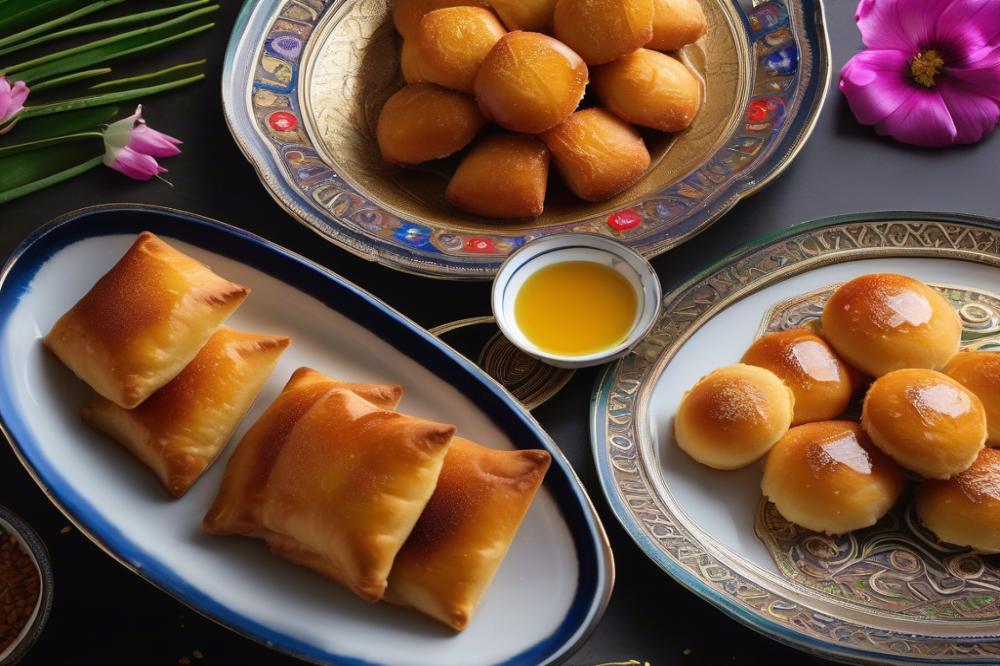Introduction
Balah El Sham is a beloved classic in the realm of Egyptian desserts. This delightful treat captures the essence of indulgence with its crispy exterior and soft interior. Originating from Egypt, it has transcended borders to gain popularity across various Middle Eastern cuisine traditions. Earning a spot among the favorite fried dough delicacies, this sweet pastry is often enjoyed during special occasions and daily gatherings alike.
Many people in the Arab world embrace these Arabic sweets with open arms. They symbolize warmth and hospitality, often served alongside tea or coffee. The joy of sharing Balah El Sham highlights its role as a unifying dessert in Middle Eastern culture. With its exquisite combination of flavors, it stands out in a vast array of traditional pastries.
Those who appreciate warm desserts will find that this dish holds a special place in their hearts. The simplicity of its dough recipe allows anyone to recreate the magic at home. In this cooking tutorial, we will guide you through each step, ensuring that your attempt at making these delicious Egyptian churros is a success. Whether you are new to cooking or an experienced chef, this dessert recipe is designed for all skill levels.
Simply put, Balah El Sham is a true celebration of sweet indulgence. Its rich tradition and delightful taste make it a must-try for any dessert lover. As we delve into the process of making these wonderful pastries, prepare to enjoy a flavorful adventure that brings the spirit of the Middle East right into your kitchen.
What is Balah El Sham?
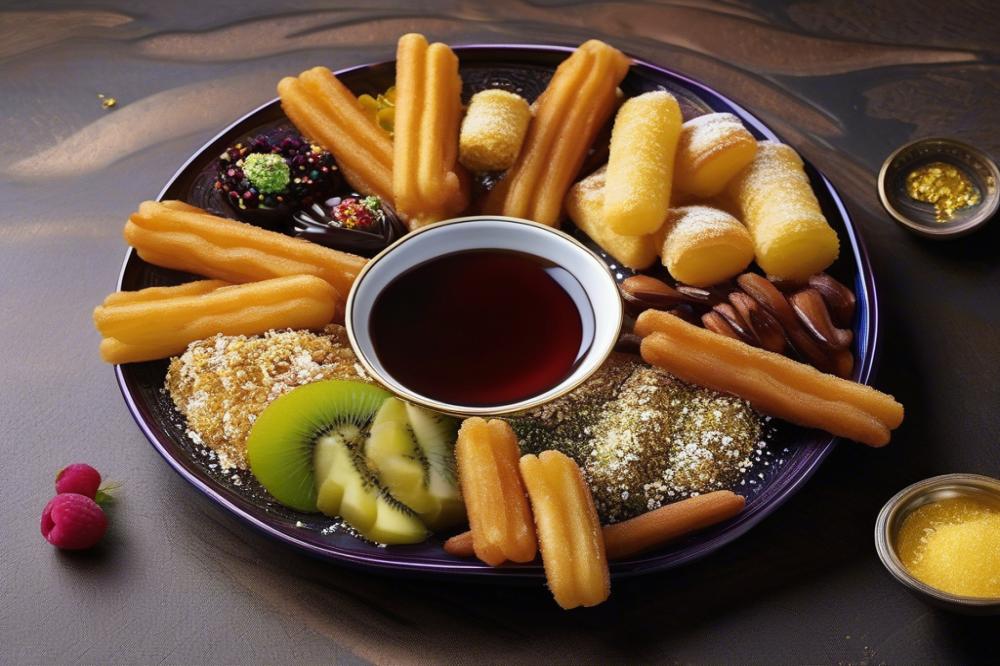
Balah El Sham is a type of fried dough that holds a special place in the realm of Middle Eastern desserts. This pastry is known for its delicious exterior, which is crispy and perfectly golden. Inside, it often has a soft and airy texture that contrasts beautifully with its crunch. Many people enjoy Balah El Sham coated in sugar and often drizzled with sweet syrup. This delightful treat is similar to churros, which are popular in Spanish cuisine. Both are fried, sweet, and usually enjoyed warm.
Comparing it to other Middle Eastern sweets reveals similarities and differences. Many Arabic sweets share a common theme of being rich in flavors, often incorporating spices, nuts, and various fillings. While churros are typically served with chocolate sauce or hot drinks, Balah El Sham is often presented alongside syrup, giving it a distinctive sweetness. Additionally, other traditional pastries might include fillings of dates or pistachios, yet Balah El Sham typically focuses on its dough’s crispy texture and the added syrup for flavor.
The significance of this pastry in Arabic sweets culture cannot be overstated. People often share Balah El Sham during family gatherings and festive occasions. It represents hospitality and the joy of sharing warm desserts with loved ones. Many cooking tutorials focus on the dough recipe, highlighting how to achieve the perfect consistency for frying. For many generations, mastering this dish has been a pride for families, adding to the rich tapestry of dessert recipes in the Middle East. Each bite combines heritage and tradition, celebrating the art of sweet pastries that have delighted many.
Ingredients List
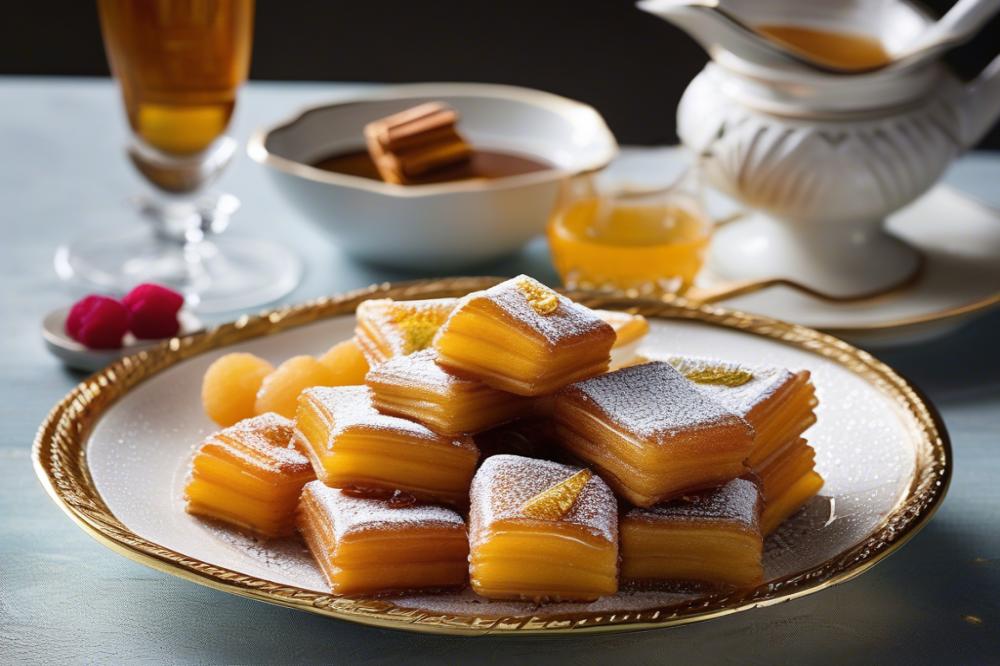
Dough Ingredients
To prepare the dough, gather the following ingredients:
- 1 cup water
- 1/2 cup all-purpose flour
- 2 tablespoons cornstarch
- 1/4 teaspoon salt
- 1 teaspoon vanilla extract
- 2 eggs
- Oil for frying
This dough recipe features a blend of simple components. Each ingredient plays a crucial role in achieving the perfect texture. Water creates the base, while flour adds structure. Cornstarch contributes to a light, airy consistency. Salt enhances the flavors, and vanilla gives it a touch of sweetness. The eggs provide richness and help bind the ingredients together. Choosing the right oil for frying is essential for achieving that golden-brown color.
Sugar Syrup Ingredients
Next, prepare the sugar syrup, which will sweeten your fried dough.
- 1 cup sugar
- 1/2 cup water
- 1 teaspoon lemon juice
This sweet syrup complements your Middle Eastern desserts perfectly. First, dissolve the sugar in water over gentle heat. Adding lemon juice helps prevent crystallization, keeping the syrup smooth. Once it reaches the desired consistency, it makes for a delightful topping on these warm desserts.
Nutritional Information
Understanding the nutritional content of your ingredients is vital while preparing these Arabic sweets.
- Calories: The total calorie count can vary based on the amount of oil absorbed during frying.
- Sugar Content: The sugar syrup adds a significant amount of sugar. You can adjust it according to your preference.
- Fats: Frying in oil contributes to the fat content. Using a healthier oil may reduce the impact.
- Proteins: Eggs in the dough provide a source of protein, enhancing the nutritional profile.
These values are essential when considering any dessert recipes. They can help you understand what you are consuming while enjoying delicious traditional pastries.
Cooking Instructions
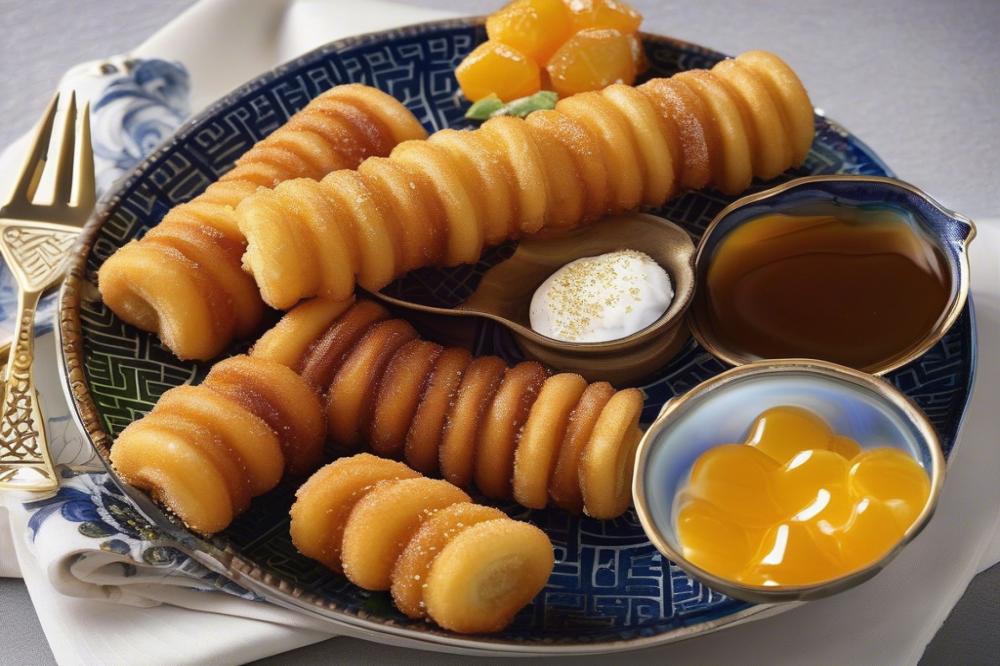
Step-by-step method to prepare the dough
Start by gathering your ingredients for the dough recipe. You will need water, flour, and a pinch of salt. Boil the water in a pot, then remove it from the heat. Gradually add flour while stirring with a wooden spoon. Mix until a dough forms. Allow it to cool slightly, then knead it until smooth and elastic. This process creates a base for your sweet pastries.
Tips for achieving the perfect consistency
Dough consistency is crucial for achieving great Middle Eastern desserts. Aim for a sticky yet manageable texture. If the dough is too dry, add a tiny bit of water. Conversely, if it feels too wet, sprinkle flour sparingly. Kneading plays a big role in developing the right texture; be patient and work the dough thoroughly.
Instructions for frying the dough to golden perfection
Heat a deep pot with vegetable oil over medium heat. Use a pastry bag fitted with a round tip to pipe the dough into the hot oil. Shape them into long strips or spirals, depending on your preference. Fry a few at a time to avoid overcrowding. Golden brown color should indicate doneness. Remove them carefully with a slotted spoon and let them drain on paper towels.
How to prepare and drizzle the sugar syrup over the fried pastries
While the pastries cool, make sugar syrup. Combine equal parts water and sugar in a saucepan. Heat this mixture until it simmers. Add a splash of lemon juice for flavor. Allow it to thicken slightly. Once your pastries are cool enough to handle, drizzle the warm syrup over them. This adds sweetness and enhances their deliciousness.
Serving suggestions and best practices
Traditional pastries are best enjoyed warm. Serve them on a decorative plate to impress your guests. Consider pairing with Arabic sweets like dates or coconut. Offer tea or strong coffee on the side to complement the flavors. Leftovers can be stored but are best when fresh. Avoid refrigerating them to maintain their texture.
Tips for Perfecting Balah El Sham
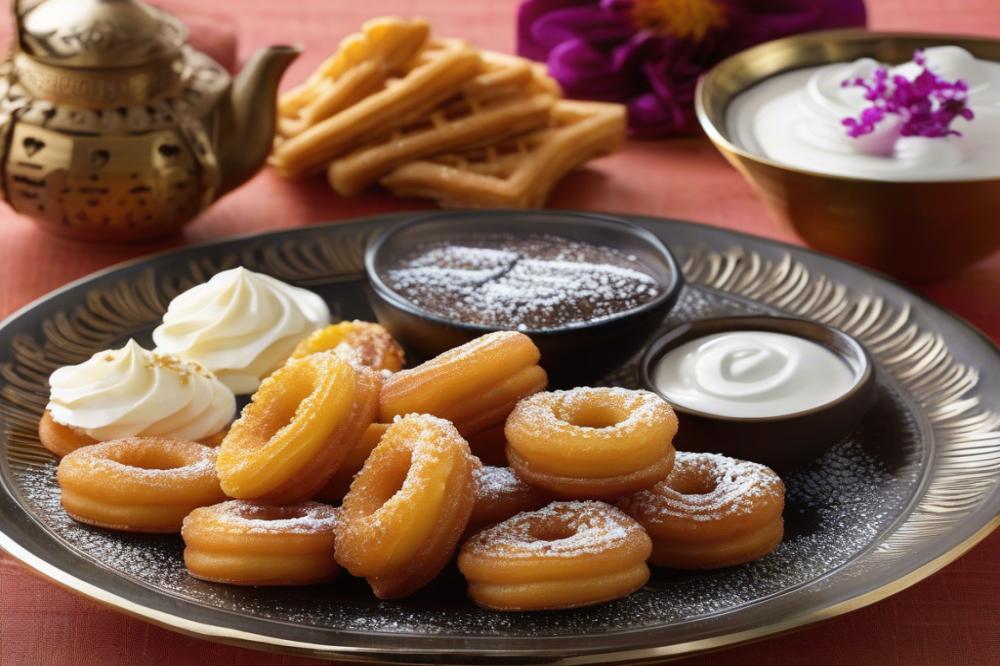
Common Pitfalls and How to Avoid Them
When making this delicious fried dough, achieving the right consistency is crucial. Too thick of a batter can make it difficult to pipe properly. Always check that the dough recipe contains the right balance of flour and water. Another common issue is overheating the oil. If the temperature is too high, the outside may brown too quickly while the inside remains raw. Use a thermometer for accurate readings. Pay attention to the piping technique, as uneven shapes can lead to uneven cooking. Lastly, let the sweet pastries cool on paper towels after frying. This step helps remove excess oil.
Suggestions for Variations and Flavor Enhancements
Creating variations can be a fun part of your cooking tutorial. Consider adding spices to the dough recipe such as cinnamon or cardamom for a warm flavor. You might also try incorporating orange blossom water to give a fragrant twist. For those who enjoy chocolate, drizzling melted dark chocolate over the finished churros could create a decadent option. You can even fill them with a cream, like pistachio or rose-flavored paste, before frying. Each change adds a personal touch and enhances enjoyment.
Pairing Balah El Sham with Other Middle Eastern Desserts
Serving these sweet treats alongside other Arabic sweets makes for a delightful spread. Consider pairing them with baklava or kunafa for variety. A dessert table featuring both fried dough and traditional pastries can create a festive atmosphere. Moreover, serving these warm desserts with a side of sugar syrup is always an excellent idea. The syrup complements the crispy exterior and adds additional sweetness. Guests will appreciate the mix of textures and flavors in such combinations.
The Cultural Significance of Balah El Sham
Balah El Sham has a rich history in Egypt and across the Middle East. This dessert is a type of fried dough, similar to churros found in other cultures. Originating from the streets of Egypt, it has evolved into a beloved treat throughout the region. Often associated with festive occasions, these sweet pastries hold special meaning for many families.
Historical Context
Known for its crispy texture and sweet flavor, this dish reflects the culinary traditions of the area. Different regions have their own variations of the dough recipe, showcasing a blend of cultures over time. Traditionally prepared during holidays and special gatherings, it represents communal joy. The preparation of Arabic sweets like Balah El Sham often involves gathering family members, turning the cooking process into a bonding experience.
Festive Occasions and Celebrations
On holiday occasions, serving warm desserts often includes this delicacy. People frequently enjoy it during Ramadan, especially when breaking their fast. The sweet smell of sugar syrup adds to the festive atmosphere, drawing people together. Markets bust out with vendors selling these treats during celebrations, creating a vibrant scene. Families create memories as they share these desserts, reinforcing the spirit of togetherness.
Regional Variations and Adaptations
Across the Middle East, variations of this dish emerge, each reflecting local tastes. Some regions prefer a thicker coating of sugar syrup, while others might add different flavorings or spices to the dough. Different countries have adapted Balah El Sham to their unique culinary practices. These changes lead to diverse dessert recipes that still honor the original form. Each adaptation offers a glimpse into the culture and preferences of the people who enjoy it.
Wrapping Up the Delight of Balah El Sham
Making Balah El Sham can be a fun and rewarding experience. The joy of creating this fried dough treat is unmatched. Each bite provides a delightful contrast between the crispy exterior and the soft filling. Recipes like this are a testament to the rich culinary traditions of the Middle East.
People should definitely give this recipe a try at home. The process may seem challenging, but it is approachable, especially with a little practice. Soon, you will find that the rewards outweigh any initial doubts. Sharing these pastries with friends and family can create wonderful moments filled with laughter and joy.
Traditional pastries play a significant role in Middle Eastern desserts. They not only satisfy the sweet tooth but also connect generations through shared recipes and stories. Each region has its specialties, and making these treats at home keeps these traditions alive. Balah El Sham stands out as a perfect blend of simplicity and indulgence.
So gather your ingredients and prepare your kitchen. Creating these delicious treats will bring warmth and happiness to your table. Enjoy the experience, and don’t be afraid to make it your own. In the end, it’s all about savoring the flavors and celebrating the culture behind each delightful bite.

